Why Is There a Hole In My Basement Floor? Explained
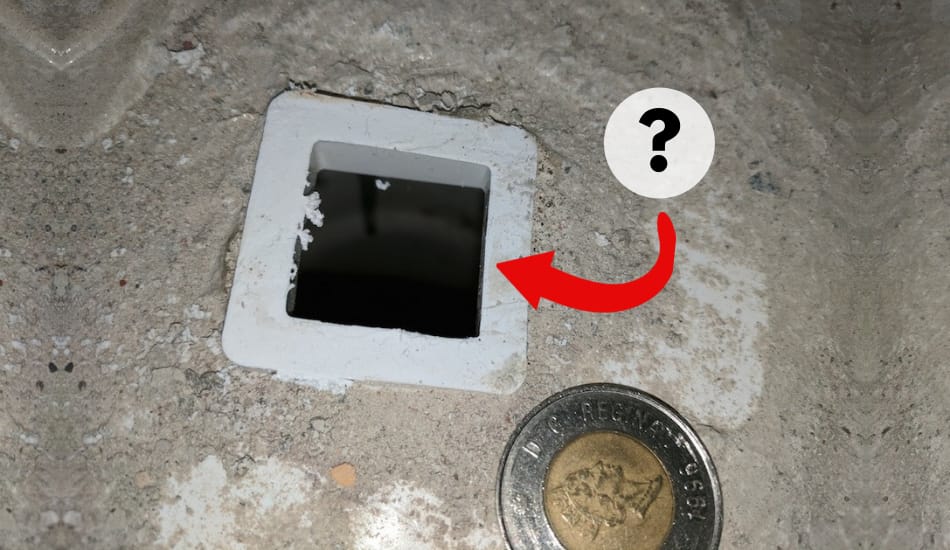
A basement that has never been completely finished is often the part of the house that homeowners are most terrified of because of the uneven concrete floors, exposed wires, and mysterious holes. However, holes in the basement are not hard to fix. It is only important to recognize whether the hole is here for a reason or not. When you figure out what kind of hole it is, you are one step away from making your basement more comfortable. In this article, we’ll explain just that. So, let’s start!
So Why Is There a Hole in My Basement Floor? Usually, the basement floor can have a hole that is a functional or old and non-functional drain. However, this could also be a sump pit or a roughed-in plumbing hole that can also appear in the basement. Over time, basement floors can result in holes.
Although these are just some of the possible reasons why basements have holes, below we will go into even more detail about why some basements have them and when they can appear over time.
Drainage Holes Are Common In Unfinished Basements
A hole in your basement usually indicates a drainage hole. They are necessary for the basements as they are the first to be hit by water in the event of a flood. They are also important for the maintenance of the house because they can help in case of flood drain pulls out water from toilets, sinks, and baths in the household.
Since the purpose of the drain hole is to drain excess water, the floor will have slopes towards the hole on all sides. Also, there is a grate made of metal on top of the drain hole in many cases.
The drain hole must be deep because it must ensure that excess water is stored in the tank before the sump pump transports it to a storm drain or the surface. If the drain hole is not deep, it will lose its purpose, which means the reservoir will quickly fill up.
Non-Functional Drains Are Common In Old Basements
Due to time, the systems installed in basements age as well and stop functioning. This is a common problem, especially when it comes to drains that lose functionality over the years. Also, compared to new systems that are built with the help of new technologies, old drains are becoming obsolete.
When you live in an old house there is a good chance that the hole in your basement is actually an old drain hole that is no longer in use. Such a hole can be recognized by its appearance very similar to the holes we talked about in the section above, but with a few important differences.
Keep in mind that the hole in your basement will obviously be dry since it is not used because its role has been taken over by the new system. Also, it is likely that you will notice signs of an attempt to bury the hole or that the hole will be filled with gravel which is a characteristic of old French-style drainage holes.
Below we will list a couple of possible scenarios of what a hole in your basement floor could be.
1. Sump Pump Pit
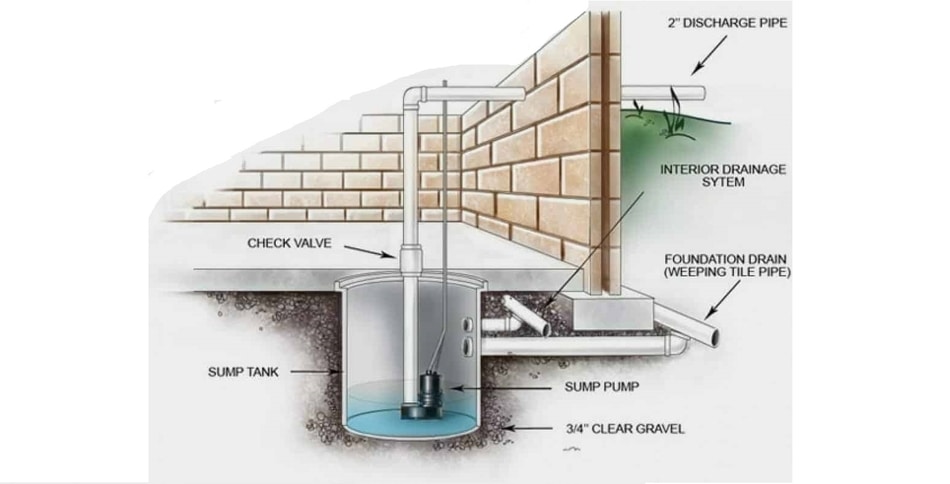
If you notice that the hole in your basement is much larger than the typical drainage hole, is placed at the lowest point in the basement, the hole is not too deep, and it doesn’t come with a slope, then it is probably a sump pump pit.
The purpose of a sump pump pit is to collect excess water from the house during heavy rains or floods and send it away from your home’s foundation. If you live in an area where large amounts of rain are common, you can expect the sump pump pit to be an integral part of your home.
When the water reaches a certain level in the sump pump pit, the pump activates and discharges water outside the house, as far away from the foundation as possible. If during a heavy rainstorm you hear a loud engine sound from your basement, there is no reason to worry, your sump pump is doing its job.
However, sometimes it could also be an old sump pump pit. If you have no experience with sump pump pits, especially if you have not lived in the United States, you should know that you will hardly be able to distinguish the functional from the old sump pump pit that is no longer used.
2. Rough-In Drain For Plumbing
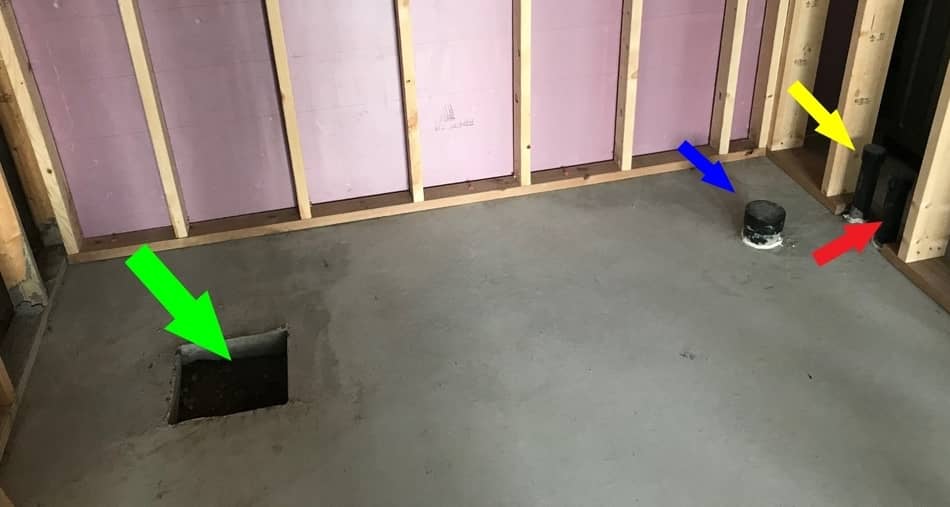
Rough-in plumbing is a process that is not finished. In this process, the basic framing is finished, but other parts such as showers and toilets are not installed.
When the hole in your basement does not resemble the sump pump pit or drain hole, the best chance is that it is a preparation for connecting to the drain of some bathroom fixture. If you have just moved into your home and it is not clear what a hole of this type is doing in your basement, it is probably an unfinished project of the previous owner.
This is not an unusual situation. When building a house, many plan that their basements will eventually become functional living spaces with a bathroom. But such plans do not always go as planned. It may also be the case that the hole is a remnant of old installations that have been moved to another location.
Components of this type of hole are pipes that you may not notice right away, especially because they are usually covered with sand. But with just a little digging, if it’s a roughed-in plumbing hole, the pipes will pop out.
3. Basement Weak Spots (Flooring)
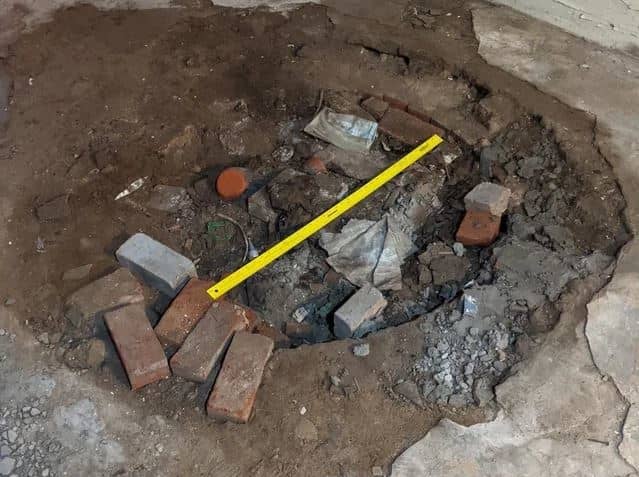
When there is a hole in the basement that is not deep, has an irregular shape, and has cracks around it, then it is probably a weak spot in the basement foundation that was cracked.
There are several reasons why weak spots form on basement floors, and here are the most common ones:
- A hole can form after the foundations have settled, especially in the case when the work of laying the foundation is poorly done.
- Cracks and holes in the basement floor can also be caused by water that slowly erupts as a result of false water tables created during the construction of the basement.
- The cause of the creation of a hole in the basement floor can be the expansion of the soil under the house, which is a situation that is characteristic of areas where there is a higher percentage of clay in the soil. As the soil particles expand, heaving occurs, causing the concrete to rise and crack, creating holes.
When you notice that heaving has occurred, a professional should be called in to repair the house’s foundation. If there are cracks around the hole, which suggests that it is not heaving but sinking, you should bury the holes and level the foundation. This job can be done by yourself or with the help of a professional.
Note! If the cracks around the hole are just a hairline there is no need for repairs as this is a common occurrence. But the hole still needs to be filled.
4. A Mystery Hole In The Basement Floor
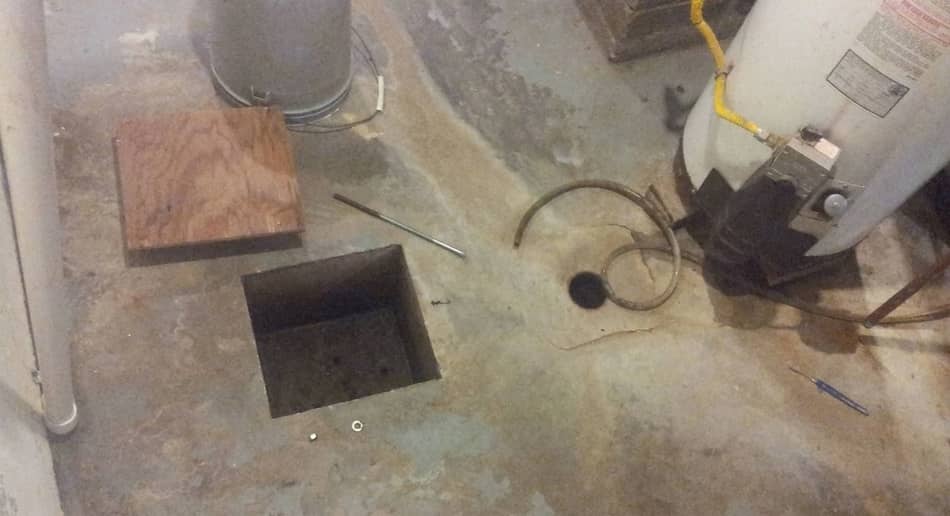
If none of the above points to this problem, there is no reason for panic. Unusual holes in basements are not an uncommon thing. If you do a search on internet forums, at least one person will say she had such a problem in her basement.
Mystery holes are a characteristic phenomenon in older houses, behind which are decades of upgrades, remodels, and wear and tear. All that can cause holes in the basement in various ways.
Should You Block The Hole In Your Basement Floor?
We don’t recommend closing the basement hole if it has a purpose. Here we are talking about sump pump pits, drains, and rough-in plumbing holes. Also, backfilling the hole is not recommended if you notice that water accumulates. At least until you figure out why this is happening if it’s not a drain hole.
If the hole is rough-in plumbing, you can block up the hole if you are sure that you will never use it. The same goes for holes resulting from cracking in a weak spot of the foundation structure. Once you block such holes, you will reduce the possibility of water penetrating your basement.
You can also seal the holes, which will definitely reduce the possibility of tripping and significantly improve the room’s appearance. When you come across a mystery hole in the basement, it is always good to call an expert to determine whether the hole should be filled in, or it has a function and which one is it.
How To Block Non-Functional Hole In Your Basement?
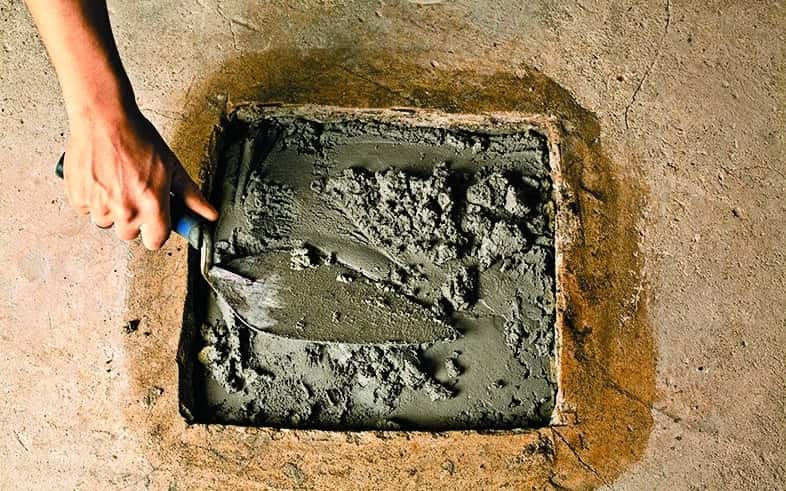
When you are confident that the hole in your basement is non-functional and you want to block it, then this job is very simple. Below I will give you a recommendation on how you can do this in the easiest way possible.
First, with the help of a woodpecker and a hammer, remove the concrete that surrounds the hole and then clean the area. Larger pieces can be picked up by hand, and smaller ones you need to vacuum.
Soak a sponge in warm water and clean the area around the hole well. Then wait for it to dry completely. It is recommended to buy a concrete adhesive for this task. Due to its easy handling and excellent reviews, I recommend Sikaflex Self-Leveling Sealant for this job.
Carefully apply the concrete adhesive to the hole following the procedure as explained in the instructions that came with the product. Note that you also need to buy a patch mixture of concrete for this project. I recommend the Red Devil Pre-Mixed Concrete Patch, which dries quickly and is praised among DIY project lovers.
As in the case of concrete adhesive, carefully prepare the patch mixture of concrete for use following the procedure as explained in the instructions that came with the product. Put the mixture in the hole and use a 2×4 post to level it. Once you have filled the hole, you can smooth it using a trowel. After you are done, leave everything to dry for at least 24 hours. And your hole job is done!
If you want to learn more, be sure to read How To Fix a Hole In a Bathtub?
FAQ: People Also Ask
What is the hole in the basement called?
The common name is sump pit, but it is also often called sump well, sump basin or just sump. It is a hole that has the purpose of collecting water in the basement or some other crawlspace. If you live in an area where large amounts of rain are common, you can expect the sump pump pit to be an integral part of your home.
What is the hole in my basement floor?
Weep holes are concrete blocks that are drilled in at the bottom level of the basement. When the block is drilled, water can exit through holes and go directly to the drainage system. These weep holes are additionally helping to alleviate pressure from house foundation walls.
Final Thoughts
As you can see, holes in the basement are not uncommon thing to see. In this article, we explained how to recognize if a hole in your basement is there for a reason or simply it is created by cracking and poor maintenance. Therefore, when you notice one, don’t panic! I hope that this article has helped you and if you have any additional questions about the basement hole, feel free to comment below.
